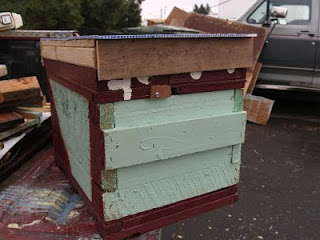Setting up an outyard
Today I moved some colonies to a new yard. A good friend of mine owns some property in southern Stevens county that is surrounded by orchards, sunflower fields and some great snow berry and HawthorneThis is what they looked like when I loaded them into my truck
Notice the ratchet straps holding the inner covers down on the supers. I learned about this the 'hard way'. I was transporting colonies a few years back when them unsecured. Much to my surprise, I had a few escapees at a red light in town! The road vibration caused them to shift in transit.
I learned my lesson. Now each hive is secure using these straps and this makes everything 'bee tight' for trips to the outyards.
Now these 5 colonies are safely installed on a couple of pallets. I have bubble wrapped the back side plus a folded tarp on top. It is nice today but that situation may not last long!
The hives are pushed together for mutual warmth. Now, with them so close I felt I might suffer from some drift - so I have painted each colony brood chamber with distinctive color. I'm hoping they will 'bond' better with their specific homes.
Note the blackened super on top of the brood chamber and inner cover. This is used to protect the syrup jar inside. The black paint causes the temperature to rise quickly in the direct sun. This, in turn, warms up the syrup and encourages feeding.
I am excited about the prospects for this yard. Should work very well.
- Have a wonderful Easter Sunday!















